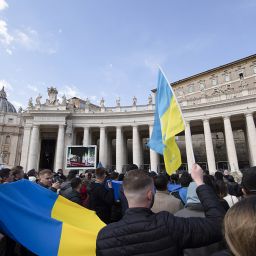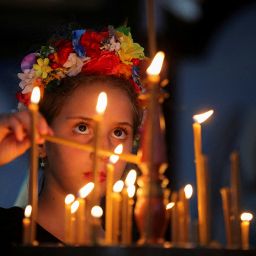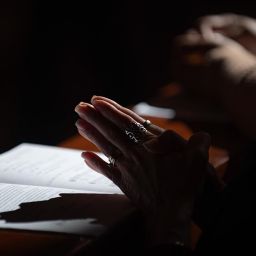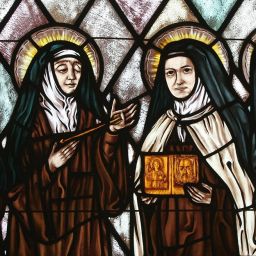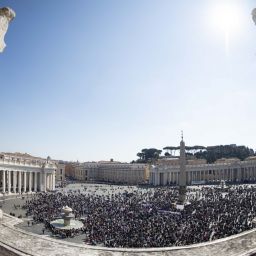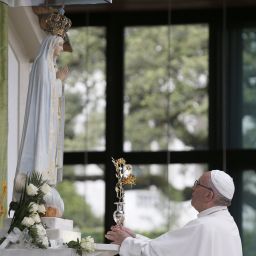By Bishop Greg Kelly
Special to The Texas Catholic
The rosary as we have it today developed over many centuries. As early as the 2nd or 3rd century, monks in the desert used knotted ropes as they prayed. The rosary itself became known as “The Poor Man’s Breviary.” Since most people couldn’t read or pray the 150 Psalms of the Bible as was done in monasteries, the practice of substituting an Our Father and later a Hail Mary for each of the Psalms gradually grew up. Mysteries were added later still, focal points for reflecting on the key events in the life of Jesus and Mary, from the Annunciation to the Crowning of Mary as Queen of Heaven and Earth.
Even in the last 100 years or so, significant developments have occurred in the praying of the rosary, most notably the addition of the Fatima Prayer in 1917: “O, my Jesus, forgive us our sins; save us from the fires of hell. Lead all souls to heaven, especially those most in need of your mercy”; and in 2002, the addition by Pope St. John Paul II of the Luminous Mysteries: reflections from the public ministry of Jesus.
The rosary has long held pride of place in the devotional life of many Catholics. Unlike the liturgy of the Church, particularly the Mass, devotional prayer leaves a lot of room for personal preference and choice.
However, in an age when we are again in danger of becoming illiterate when it comes to our faith, the rosary is a time-honored way of keeping in our minds and hearts the central realities of our faith: the Incarnation, the Cross and Resurrection of Jesus, Pentecost, the full flowering of the effects of these in the life of Mary in her Assumption and Queenship. It also helps keep alive the special place Mary has held in our faith over the centuries, her closeness to us and her concern for our lives.
My mother and father, over the 55 years of their marriage, prayed the rosary most nights before they went to bed. Mom started praying the rosary before her senior year in high school. Her Catholic school closed at the end of her junior year, and she had to go to the public school where she was afraid she would fail. Her mother suggested she pray the rosary, and she kept praying it. In the first five years of their marriage, they lost five children, all but one healthy and premature. Trips to the Mayo Clinic, other tests gave no explanation. They continued with their devotion to Mary; they made a promise to her to dress a child in blue and white in her honor for seven years if only the child would live. My sister, Mary, got that honor, even to having the saddles on her saddle shoes painted blue.
The rosary is a good traveling prayer; also a good walking prayer. It brings to mind the central mysteries of faith and connects them to the situation of people I want to remember to pray for.
When thinking about the Annunciation, I think of those who are trying to decide about their vocation in life. In the Presentation in the Temple, I think of the elderly like Simeon and Anna who meet the young couple with the child in the temple, those who have lived long lives of fidelity and wait for the coming of the Lord. In the Finding of the Child in the Temple, I think of all the children and youth in my own family and in the Church, that they may know their place in their Father’s home and be about his business in their lives.
The Sorrowful Mysteries bring to mind the suffering members of the Church: The Agony in the Garden: those who are facing difficult choices and need wisdom and courage; the Scourging at the Pillar: those who suffer physically, victims of torture; the Crowning with Thorns: those who are suffering spiritually and mentally; The Carrying of the Cross: those who are long burdened with suffering and have to carry it with them; The Crucifixion: those who are dying.
The Glorious Mysteries point to the new life that comes in the Resurrection, a great surprise to all. In the Ascension, I think of those who are living after someone has died or some big change and are facing the chaos and uncertainty of that, clinging to the Lord’s promise to be with us all days; the Descent of the Spirit at Pentecost brings to mind those being confirmed and those ready to start something new; the Assumption: I pray for the grace of integrity in thought, word, and action, thinking that Mary’s Assumption is the fruit of a life lived honestly in every moment in response to the mission God gave her; her crowning in heaven being the final fruit of that for her and hopefully someday for us.
The Luminous Mysteries focus attention on the ways in which the Kingdom of God, as it appears in the ministry of Jesus, is like a mustard seed or a treasure buried in a field: such small, insignificant beginnings: in His baptism in the Jordan; in the Wedding at Cana; in His preaching of the Kingdom of God in obscure, out of the way places; in the glimpse of glory the disciples get on the Mount of the Transfiguration, with the command to listen to the voice of the Lord, the one telling them about coming suffering; and the greatest mustard seed of all: the Institution of the Holy Eucharist, in which He continues to give us His full self in such simple signs of bread and wine.
Over and over again, the rosary can draw us back to the heart of our faith, keep these mysteries in our hearts, and help us pray for one another, one of the spiritual works of mercy: to pray for the living and the dead.
Bishop Greg Kelly is the auxiliary bishop of the Diocese of Dallas. This column first appeared in the October 2, 2020, edition of The Texas Catholic.


